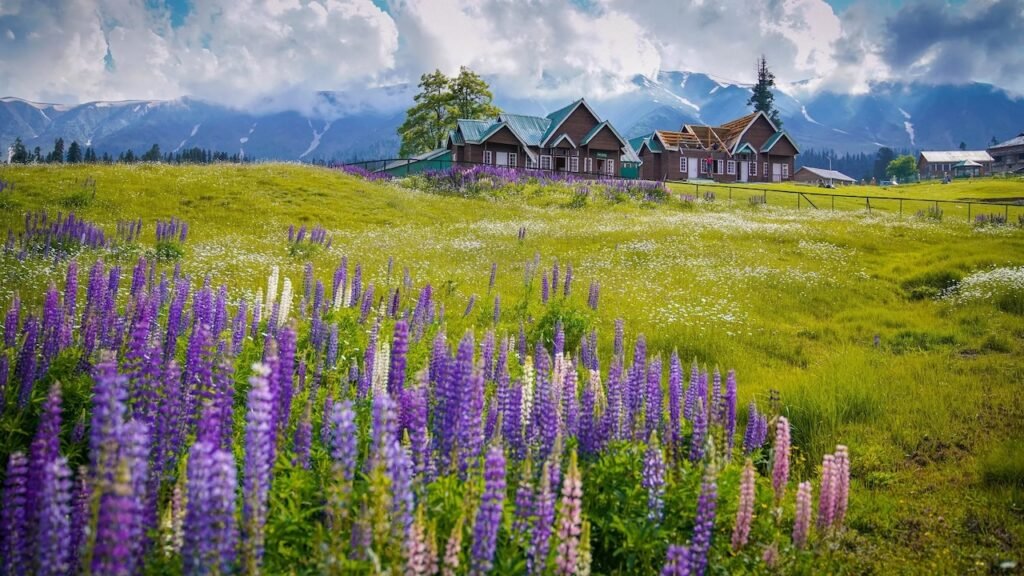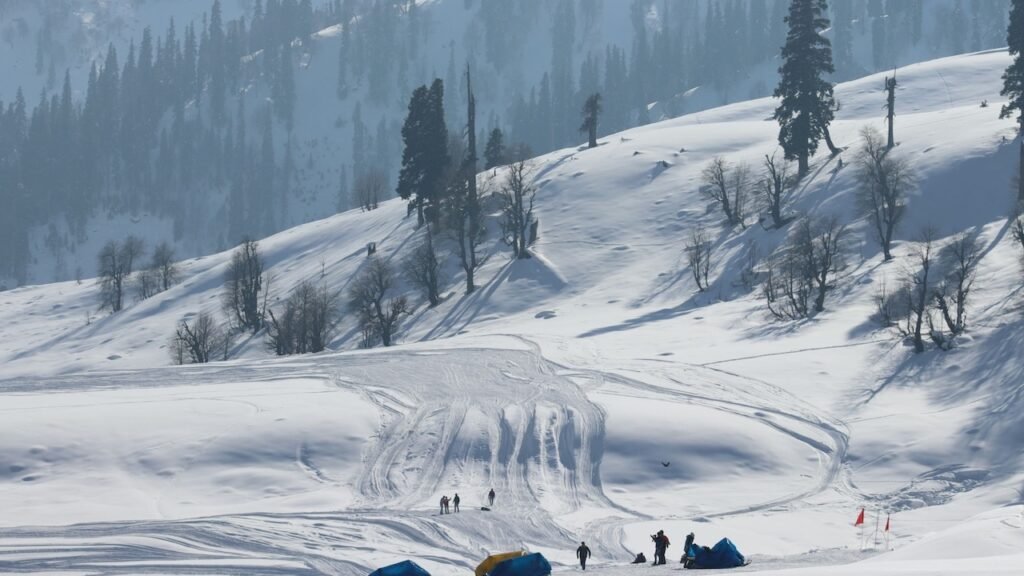In 2025, Gulmarg made headlines as a record-breaking destination, attracting over half a million visitors in the first quarter of the year alone. The surge stemmed from successful international events and improvements in infrastructure, such as state-of-the-art waste management systems and eco-friendly accommodations, positioning Gulmarg as a paragon of sustainable tourism.
Officials noted that Asia’s longest cable car, the Gulmarg Gondola, continued to soar in popularity, transporting over a million tourists last year and contributing more than Rs 220 crore in revenue over the past two years. In response, the government implemented measures to balance growth with environmental stewardship, including restricting visitor numbers at fragile sites, banning plastic use, and promoting green lodging options.
Community leaders are optimistic, highlighting the social impact for local artisans, guides, and hospitality businesses sustained by record visitor inflows. “Gulmarg is not just a natural paradise but Kashmir’s symbol of peace, culture, and economic prosperity,” remarked a district official.
Despite occasional debates over events held in sensitive seasons, Gulmarg’s resilience and appeal continue to grow, making it a model hill station for adventure, heritage, and sustainable travel in India.
Gulmarg is a renowned hill station in Jammu and Kashmir, famous for its breathtaking landscapes, rich history, vibrant culture, and thriving tourism industry. Below is an in-depth exploration of Gulmarg, covering its origins, traditions, sightseeing delights, travel routes, location, tourism revenue, and much more.
Introduction
Gulmarg, meaning “meadow of flowers,” stands as one of India’s most picturesque and sought-after hill stations, combining scenic grandeur, snow sports, and a vibrant cultural heritage. Nestled in the Western Himalayas in Jammu and Kashmir’s Baramulla district, this destination’s allure draws both domestic and international travellers across the seasons. Beyond its natural beauty, Gulmarg boasts significant historical, cultural, and economic importance.
Historical Overview
Gulmarg’s recorded history dates back to the 16th century, when Sultan Yusuf Shah renamed the area from “Gaurimarg” to Gulmarg, inspired by the abundance of wildflowers and roses favoured by Mughal rulers. Emperor Jahangir, in particular, collected 21 varieties of flowers from the meadows to enrich Mughal gardens. British colonial officers later transformed Gulmarg into a summer retreat, introducing golf and skiing, activities that remain mainstays of Gulmarg’s tourism today.
- The world’s highest golf course, built at 2,650 meters, was established by the British, who also founded ski clubs in the early 20th century.
- After independence, Gulmarg experienced military activity, which led to its designation as a base for High-Altitude Warfare training for the Indian Army.
Gulmarg’s historical tapestry is a rich interweaving of Kashmiri, Mughal, British, and modern Indian influences, evident in its landmarks and traditions.
Culture and Traditions
Gulmarg is a melting pot of Kashmiri Muslim traditions, with lingering influences from Pandit and Buddhist cultures from neighbouring Ladakh. Local folk music and dance are prominent, while the handicraft industry thrives with items such as Pashmina shawls, embroidery, and carved woodwork.
- Culinary delights include Rogan Josh, Dum Aloo, and Kashmiri Kahwa, which are popular with visitors.
- Festivals like Eid and Navroz are celebrated with enthusiasm, often accompanied by village fairs during the harvest and blossom seasons.
Gulmarg’s multi-layered society is welcoming and steeped in heritage, with a strong sense of community and hospitality.
Tourist Spots & Attractions
Gulmarg’s top attractions merge adventure and serenity, suiting thrill-seekers and those hunting for quiet reflection:
- Gulmarg Gondola: Asia’s highest and longest cable car, offering panoramic Himalayan views and access to ski slopes.
- Apharwat Peak: The heart of winter sports; covered in snow most of the year.
- Gulmarg Biosphere Reserve: Wildlife haven for Himalayan species and striking landscapes.
- Alpather Lake: A tranquil, picturesque lake located near Apharwat Peak.
- St. Mary’s Church & Maharani Temple: Architectural marvels reflecting British and Hindu legacies.
- Shrine of Baba Reshi: Sufi shrine revered for its peaceful ambience and historical significance.
- Khilanmarg & Strawberry Valley: Valleys with blooming flowers and panoramic views.
- Drung Waterfall: Spectacular year-round, offering frozen vistas in winter.
These sites establish Gulmarg as a year-round destination, serving as both summer retreats and a winter sporting paradise.
Location and Accessibility
Gulmarg is situated amidst the Pir Panjal range, at an elevation of nearly 9,000 ft above sea level, just 31 km from Baramulla and 49 km from Srinagar.
- By Road: Well-connected from Srinagar and Jammu. Buses, taxis, and 4×4 vehicles (essential in winter) ply frequently.
- By Air: The Nearest airport is Srinagar, with direct flights from major Indian cities. Taxis from the airport cover the distance in about 2 hours.
- By Train: Travellers disembark at Jammu or Udhampur, continuing by road to Srinagar and onwards.
- In winter, snow chains or special vehicles are required to navigate frosty roads from Tangmarg to Gulmarg.
Gulmarg’s strategic location and ease of transportation make it accessible to both domestic and international tourists year-round.
Revenue and Tourism Impact
Tourism is the backbone of Gulmarg’s economy, with the region witnessing exponential growth in visitor numbers and revenue.
- In 2023, the Gulmarg Gondola alone drew over a million tourists, generating revenue of more than ₹108 crore in a single year.
- In 2025, Jammu & Kashmir (including Gulmarg) attracted 525,272 tourists in the first quarter, showing a marked increase in both domestic and international visitation.
- Gulmarg Gondola’s revenue for 2022–2024 exceeded ₹220 crore, driving sustainable and eco-friendly tourism initiatives.
- Local businesses—hotels, restaurants, guides, and handicrafts, thrive as a result, with tourism fueling employment and community welfare.
Government efforts focus on sustainable tourism, with eco-log huts, plastic bans, and waste management projects ensuring Gulmarg remains pristine for future generations.

Recent News & Developments
- Gulmarg remains in the spotlight, from fashion shows sparking cultural debates to increased surveillance during peak tourist season for safety.
- The region is also notable for hosting national and international winter sports events, such as the Khelo India Winter Games, which boosts its global reputation.
Latest security and policy developments emphasise responsible travel and preservation of local sentiment and environment.
Travel Routes: How to Reach Gulmarg
Gulmarg is easy to reach with multiple travel options:
| Route | Distance (from Srinagar) | Notes |
|---|---|---|
| Srinagar – Tangmarg | 44 km | Via National Highway 1A |
| Tangmarg – Gulmarg | 12 km | Snow chains required in winter |
| Srinagar – Gulmarg | ~56 km | Accessible by car, taxi or bus |
Winter arrivals require precautions; summer offers scenic drives through lush meadows.
FAQs About Gulmarg
What is Gulmarg famous for?
Gulmarg is renowned for its scenic beauty, wildflower meadows, world-class ski slopes, and the Gulmarg Gondola, Asia’s highest cable car.
When is the best time to visit Gulmarg?
Winter (December to March) for skiing and snowboarding, summer (May to September) for meadows and mild weather. Each season offers unique charms.
How do travellers reach Gulmarg?
Gulmarg is accessible via road, with regular bus and taxi services from Srinagar. The nearest airport is Srinagar, about 2 hours away.
What are the top things to do in Gulmarg?
Must-dos include riding the Gulmarg Gondola, skiing at Apharwat Peak, visiting historic churches and temples, going on treks, and savouring Kashmiri cuisine.
Is Gulmarg safe for tourists?
Yes, Gulmarg is generally safe for tourists, with extra surveillance during peak season. The government regularly updates safety and environmental advisories.
What cultural experiences can one enjoy in Gulmarg?
Visitors can enjoy local handicrafts, folk music, Sufi shrines, and Kashmiri festivals, experiencing authentic traditions alongside natural brilliance.
How does tourism impact Gulmarg’s economy?
Tourism is the primary revenue source, benefiting local businesses, infrastructure, and employment, with record visitor numbers in recent years.
